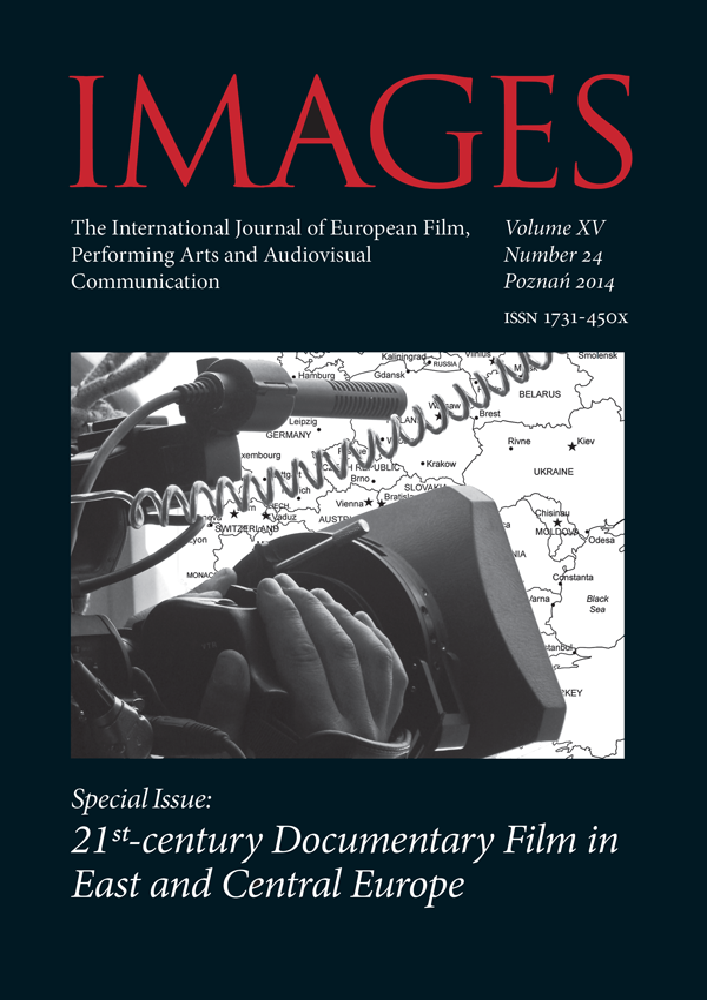Abstract
“Films from East” signalling the political breakdown in the middle of the 1980s (the Gorbachev era) were welcom ed in the offi cial circulation system. Th e fi lms were screened not only in festival cinemas, but on TV as well, and were discussed in newspapers and magazines. Soviet fi lms were especially important because they were able to carry new information about the changes taking place in Eastern Europe. If independent ideas appeared in a Polish fi lm, it could be banned from screening, as censorship was sensitive to works “threatening socialism” and “disturbing the alliance”. Th e only country in our part of Europe which did not need to be afraid of “disturbing the alliance” was the Soviet Union. We can distinguish three groups of such documentaries: analyses of social life (for example: Is It Easy to be Young? by Yuris Podnieks, Borderline by Tatiana Skabard), fi lms about contemporary threats, provoked by the Chernobyl disaster (An Unpublished Album by Victor Kripchenko and Volodymyr Taranchenko, Chernobyl the Chronicle of Diffi cult Weeks by Volodymyr Shevchenko) and documentaries “squaring accounts” with history, fi lling in so-called “blank spots” (Termination of an Agreement by Murat Mamedov, Solovki Power by Marina Goldovskaya).
References
BP, Gazeta Festiwalowa 1987, 5, June 3, p. 3.
J. Lenard, “Zadyszka”, Kino 1987, no. 9, pp. 6–8.
B. Janicka, “Pożar pożar coś nareszcie dzieje się”, Film 1992, no. 26, pp. 4–5.
V. Voytenko, “Ukrainian documentaries: a ‘microphone’ gained and lost” in: Zooming in on history’s turning points. Documentaries in the 1990s in Central and Eastern Europe, ed. J. Głowa, Uniwersytet Jagielloński, Cracow 1999, pp. 95–96.
M. Malatyńska, “Dokumenty czasu”, Życie Literackie 1987, no 24, p. 1, 7.
J. Kumaniecka, “Spotkamy się za rok?”, Ekran 1988, no. 28, pp. 14–15.
T. Sobolewski, “Cała prawda o krotkich filmach”, Kino 1991, no. 9, pp. 19–21.
J. Szymańska, “Wyspa śmierci”, Kino 1991, no. 6, p. 48.
M. Malatyńska, “Głodnym okiem”, Życie Literackie 1988, no. 24, pp. 1, 11.
B. Janicka, “Trzęsienie ziemi i święty spokoj”, Film 1990, no. 25, pp. 4–5.
Gazeta Festiwalowa 1990, no 5, June 2, p. 1.
P. Obuchowski, “Z festiwalowego kina”, Gazeta Festiwalowa 1990, no. 4, June 1, p. 4.
“HOW DO WE LOOK IN BROKEN MIRROR? Polish Documentary in the 1990s.”: <http://www.yidff .jp/docbox/9/ bx9-3-e.html> [accessed: May 2nd, 2014].
L. Julai, “Experiencing reality (The Russian cnema of the 1990s)”, in: Zooming in on History’s Tourning Points… p. 21.
License
Copyright
© by Adam Mickiewicz University, Poznań, 2014
OPEN ACCESS
